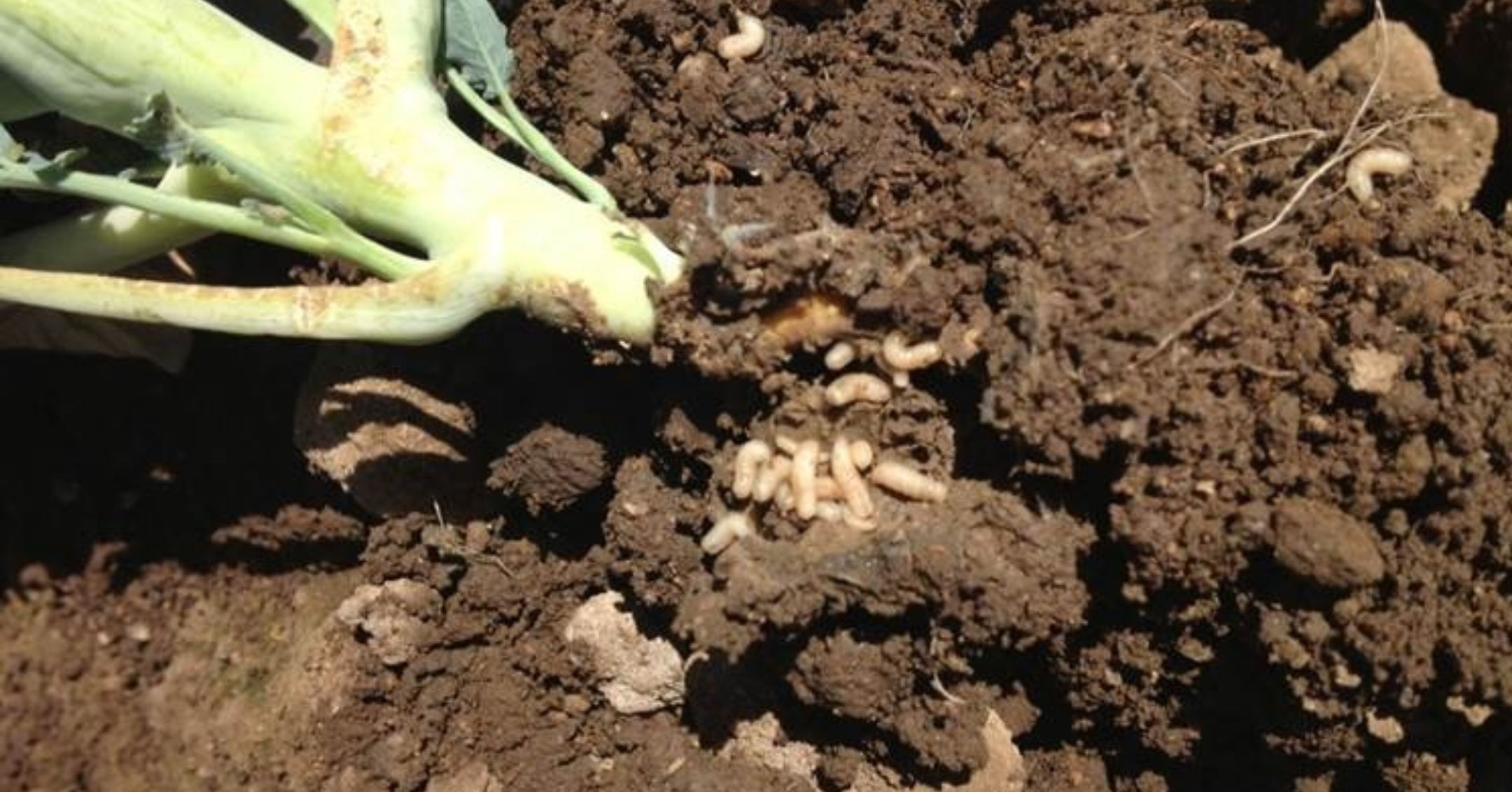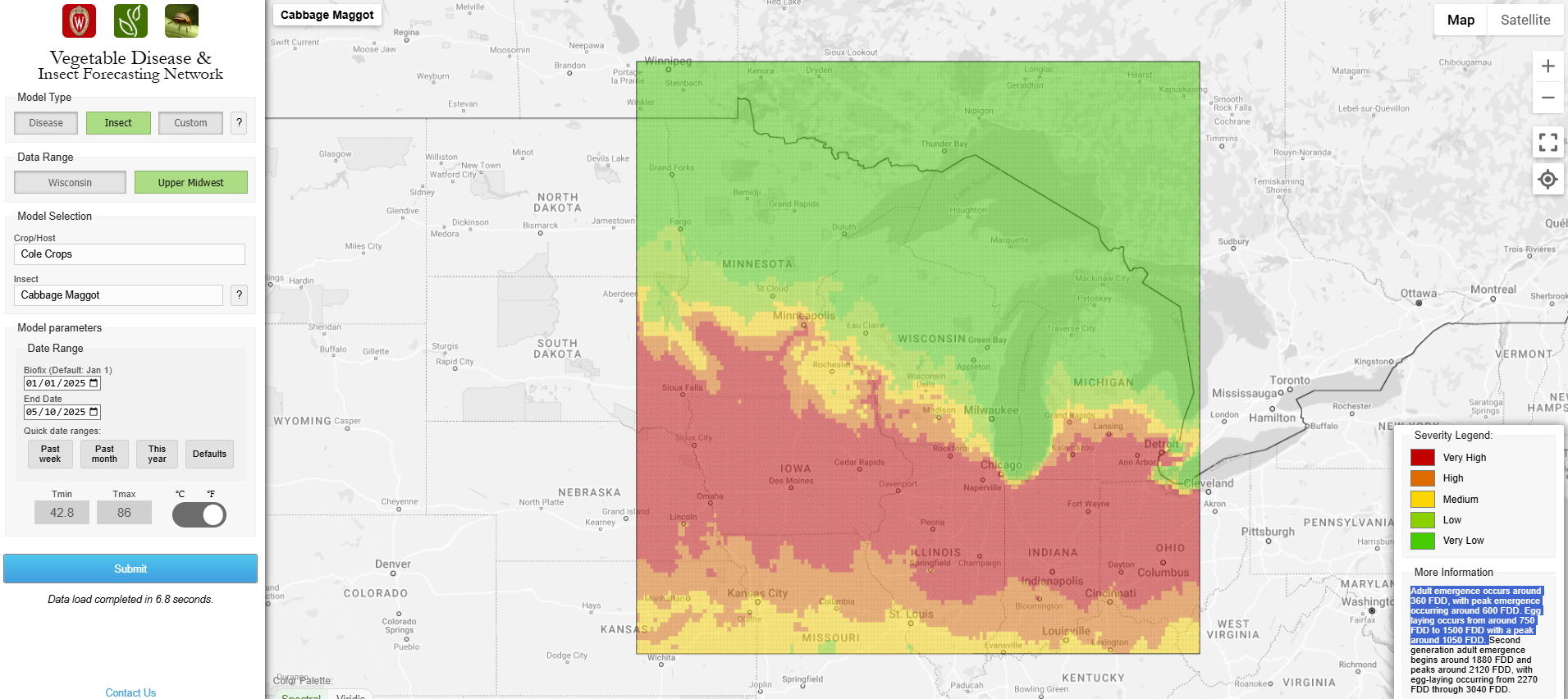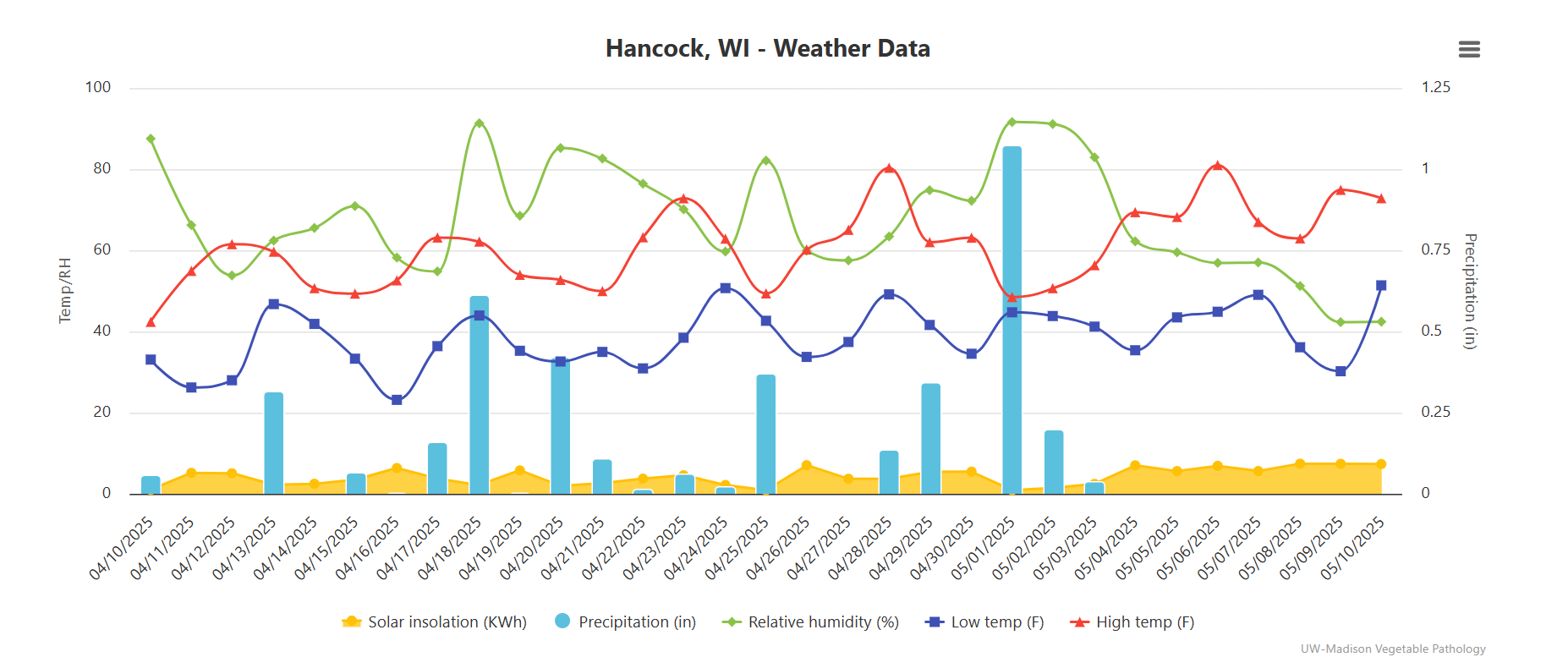
In this issue:
- Cabbage Maggot and its management
- Early blight and late blight disease risk summary for early season in central WI
- Potato Scouting Class – May 21 UW Hancock ARS (1-4PM)
Vegetable Insect Update – Russell L. Groves, Professor and Department Chairperson, UW-Madison, Department of Entomology, 608-262-3229 (office), (608) 698-2434 (cell), e-mail: rgroves@wisc.edu. Vegetable Entomology Webpage: https://vegento.russell.wisc.edu/
Cabbage Maggot (https://vegento.russell.wisc.edu/pests/cabbage-maggot/) – Cabbage maggots are early season pests that feed on the roots and lower stems of all cruciferous crops and weeds. Wounds produced by this feeding can create entry points for several cole crop diseases. Early season transplants and spring roots crops are damaged most severely.

Cabbage maggots overwinter as pupae in the upper few inches of the soil. Overwintering adults emerge in mid-May, about the same time as yellow rocket and forsythia are in bloom, and when we have reached 360 Fahrenheit degree days (FDD), with peak adult emergence occurring around 600 FDD. Peak adult activity has just entered southern Wisconsin and will progress across the state over the next 7-14 days, especially with warm forecast temperatures in the week to come.
Egg laying occurs from around 750 FDD to 1500 FDD with a peak around 1050 FDD. Adults are attracted to freshly-tilled fields with decaying organic matter. Eggs are laid on the soil near the base of cole crops. Eggs hatch in 2-7 days, and the larvae immediately begin feeding on the roots of the plant. Feeding continues for 3-4 weeks before the larvae pupate in the soil. The second generation of adults emerges in late June and lays eggs, which will develop into overwintering pupae by the next fall.
Cabbage maggot treatment is primarily preventative. Plants that already have eggs on them are likely to have damage from infestations. If possible, time planting dates to avoid peak fly emergence. Plantings after mid-June generally suffer less damage than early plantings. To avoid damage from this pest, till in cover crops 2-3 weeks before seeding or transplanting, and plant when soil temperatures are adequate (e.g. > 50 F) for quick emergence. Transplants should be planted one week before peak fly emergence. Floating row covers are also effective in protecting plants during flight periods. Do not plant cole crops in fields where animal manure has been freshly applied.
Seed treatment packages containing spinosad (Regard SC) and cyromazine (Trigard OMC) are options that can be added to the FarMore FI500 components to obtain good control of both onion maggot and seedcorn maggot.

Amanda Gevens, Chair, Professor & Extension Vegetable Pathologist, UW-Madison, Dept. of Plant Pathology, 608-575-3029, gevens@wisc.edu, Lab Website: https://vegpath.plantpath.wisc.edu/.
Potato Disease Forecasting Updates. Starting next week, I’ll offer summaries of disease risk indices for several locations in WI. With the dry and warm weather over this past week, we have accumulated early blight risk, but few to no late blight risk.
DSVs: Late blight risk can be modeled using disease severity values (DSVs). On the chart above, highlight the date of your last spray, or the date on which the crop has reached 50% emergence (at the start of the season), and note the cumulative DSVs at that point. Then subtract that number from the most recent cumulative DSV value to get the accumulated DSVs since your last spray. When this value exceeds 18, late blight management action is recommended. You can download each chart by clicking on the menu button on the upper right corner. Visit VDIFN and select the Late Blight model for a statewide map of late blight risk. We currently have accumulated just 2 DSVs for Hancock based on a potato crop that reached 50% emergence on May 1, 2025.
P-Days: Early blight risk is elevated after 300 P-Days (physiological days) have accumulated since crop emergence. Early blight management actions are recommended beyond that point. On the chart above, note the cumulative p-days on the date of crop emergence and subtract that value from the most recent cumulative p-days to get the cumulative p-days for your crop. Visit VDIFN and select the Early Blight model for a statewide map of P-Days and early blight risk. We currently have accumulated 44 P-Days for Hancock based on a potato crop that reached 50% emergence on May 1, 2025.
